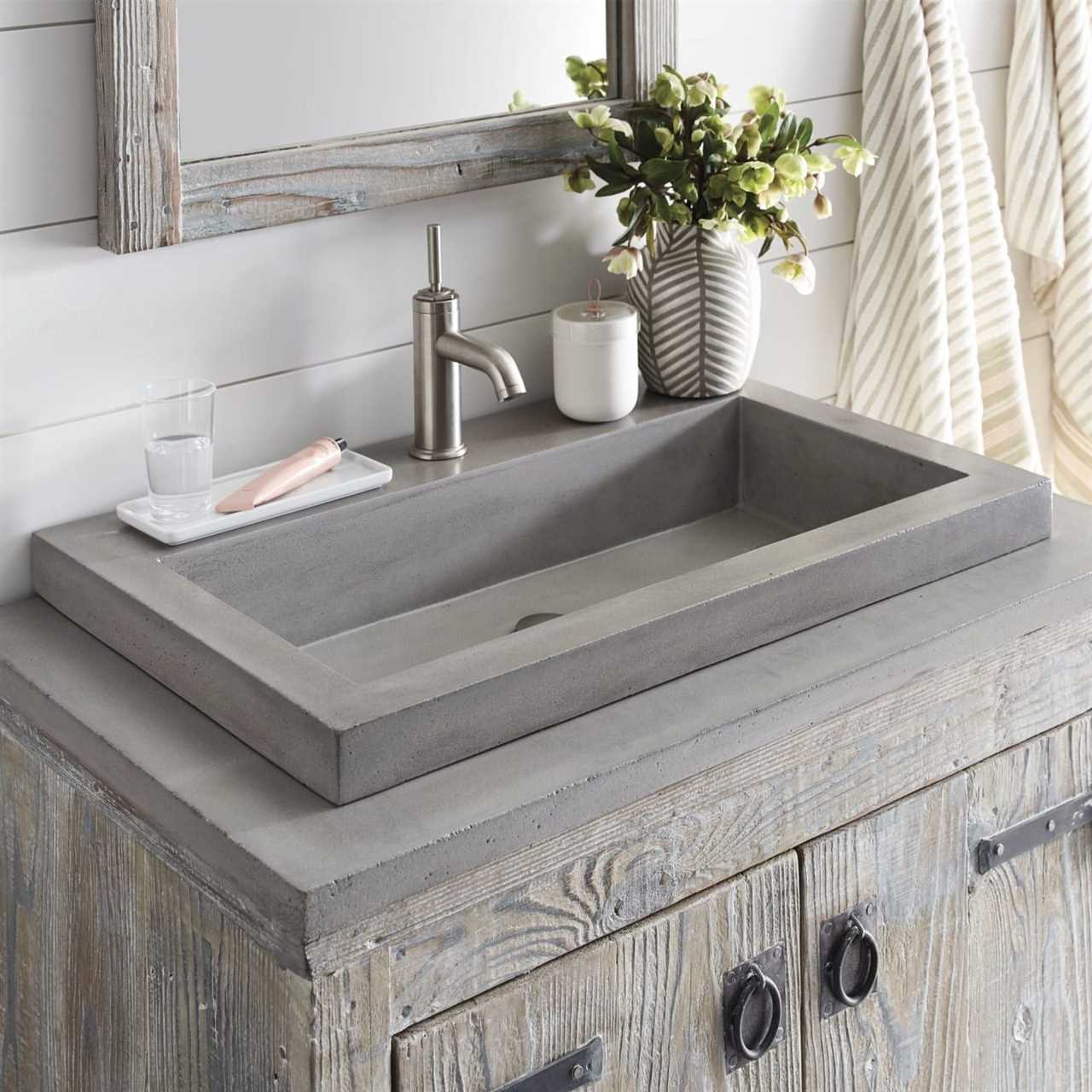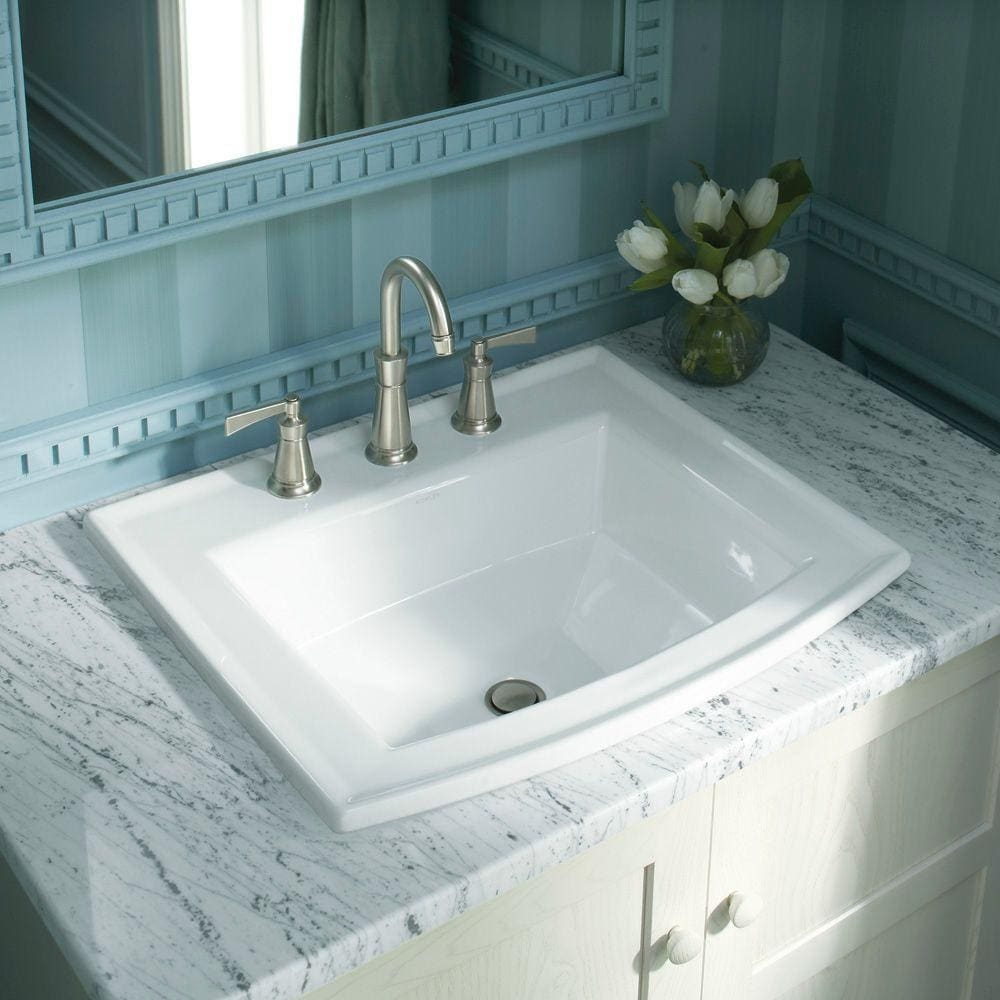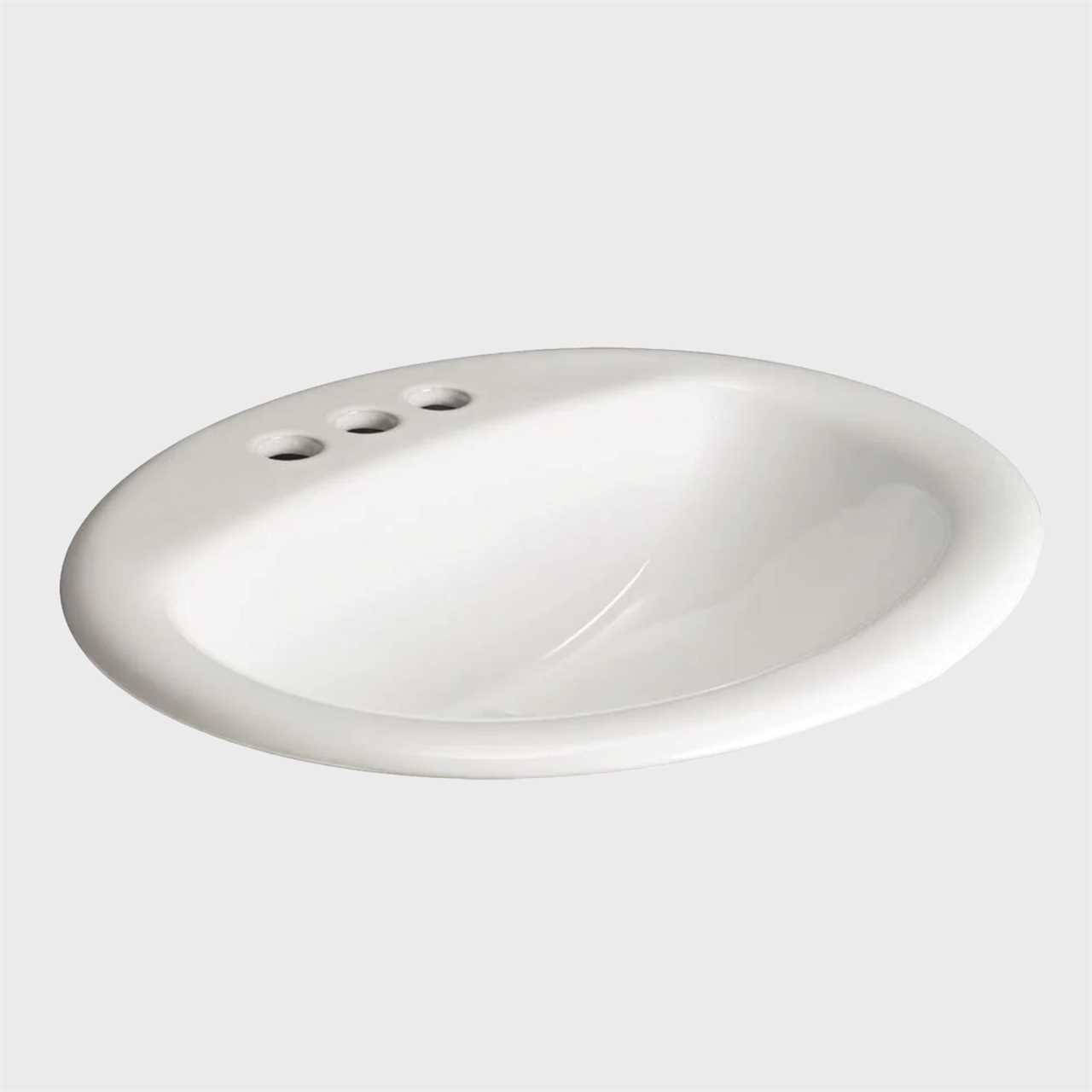Drop-in bathroom sinks are more common than other sink types, produced in a plethora of shapes and sizes with various materials. Since the sink is probably the most scrutinized fixture in a bathroom, the large selection is good news for the design-conscious homeowner seeking to make a style statement.
Whether your bathroom vanity countertop features a high-end designer finish or a clean, utilitarian laminate surface, there’s a drop-in sink for you. Drop-ins are among the least expensive bathroom sink options and are easier to install than undermounts, the most popular alternative.
Low cost is probably the most important reason for their enduring popularity, but plenty of high-end ones are out there for those who want to splurge.
What Is a Drop-In Bathroom Sink?
It’s right there in the name: A drop-in sink drops into a precut hole in a countertop. The rim rests on the countertop and supports it, which is why it’s also called a self-rimming or top-mount sink.
The rim provides almost all the support for a drop-in sink, so it’s possible to simply affix it to the countertop with caulk. Most models, however, come with fastening clips to hold the sink securely to the underside of the countertop and prevent movement.
Other than cutting the hole in the countertop and connecting the faucet and drain, installing a drop-in is a relatively effortless task. A screwdriver is the only tool you’ll need.
Types of Drop-in Bathroom Sinks
Almost everyone is familiar with the standard oval drop-in bathroom sink, but that’s far from the only type available. You can also find square and rectangular ones that can be as shallow as five inches or as deep as eight inches. Some have triangulated sides that slope gently toward the drain, an interesting alternative to the standard bowl shape.
Porcelain and ceramic drop-ins can be shiny white or come with floral or geometric glazed patterns. Lightweight copper or stainless steel models complement minimalist and monochrome bathroom color palettes as well as dramatic motifs. Drop-ins can also be made from stone, cast iron, enameled steel and solid surface materials.
Unlike kitchen drop-ins, which can have two or three basins, bathroom sinks typically have only one.
Pros and Cons of Drop-In Bathroom Sinks
Along with undermounts, vessel sinks are alternatives to drop-ins, but they are a distant third in popularity. When shopping for a bathroom sink, most homeowners weigh the pros and cons of drop-ins against those of undermounts.
Drop-in Pros
- Easy to install: Sure, you have to cut a hole for a drop-in, and that can be more or less troublesome depending on the countertop material. But a drop-in forgives any less-than-perfect cutting and measuring skills because the rim hides the imperfections.
- Best for laminate countertops: The rim also hides the plywood edges of laminate countertops.
- Cost: The least expensive bathroom sinks on the market tend to be drop-ins, but there’s one to suit every budget.
- Design flexibility: So many shapes, sizes and styles are available that it’s almost impossible not to find one that fits with your bathroom décor.
Drop-in Cons
- The rim is a dirt magnet: Because it sits on top of the counter, dirt can collect underneath it. Prevent this by caulking around the edges, but be vigilant — it can get moldy if you don’t re-caulk every few years.
- Less counter space: The rim takes up space you could use for other purposes.
- Possibility of leaks: If you don’t caulk the rim properly or the caulk wears out, water can seep under the rim and drip into the sink cabinet.
- A little too utilitarian: The ubiquity of drop-in sinks can be a drawback for anyone looking to make a design statement.
How to Install a Drop-In Bathroom Sink
Drop-in bathroom sinks usually come with a template to make measuring and marking the outline easy. If you have a laminate, wood or solid-surface countertop, you can do the cutting with a jigsaw. You’re better off having stone, concrete or quartz countertops pre-cut at the factory or hiring a pro to do it.
Once you have a hole, you typically caulk the underside of the rim, drop the sink into the hole and secure it to the underside of the countertop with the provided clips. There’s more than one type of clip, so it’s important to read the installation instructions to be sure you’re using them properly.
After securing the sink, the rest of the installation job — installing the drain and hooking up the faucet — is the same as any other sink. One advantage of a drop-in: You can attach the faucet before dropping it in, saving yourself the frustration of tightening those lock nuts while working inside the sink cabinet.
Excellent Drop-In Bathroom Sinks
Best Budget Drop-in Bathroom Sink

The oval shape of the Glacier Bay Aragon measures 17-in. x 20-in., perfect for a small bathroom. It features a front overflow channel and three faucet holes that can accommodate standard four-inch faucet. At $39, it’s one of the least expensive drop-in sinks on the market.
Best mid-range drop-in bathroom sink

The rectangular Kohler Archer features an overflow system and three holes spaced for a widespread faucet. The sink is almost eight inches deep, and the bottom slopes gradually toward the drain. The sink on the whole has a clean, faceted appearance. All this for $159.
Best high-end drop-in bathroom sink

The specious, shallow Native Trails NativeStone 30-inch Rectangular Stone Composite sink offers a 26-in. x 12-in. basin that’s less than five inches deep. Handcrafted from concrete and jute fiber, no two sinks are exactly the same. Costing less than $1,000, it’s works with a countertop- or wall-mount faucet for added sophistication.
Did you miss our previous article...
https://rsssuperfeeds.com/life-hacks/9-tips-to-remodel-your-bedroom






